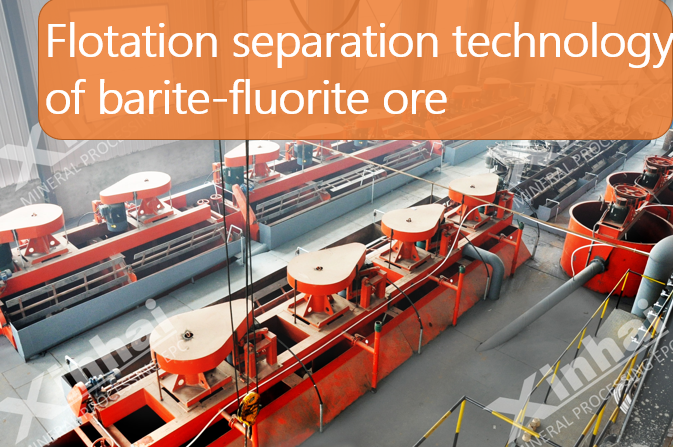Flotation separation technology of barite-fluorite ore
2024-09-20 Xinhai (1486)
2024-09-20 Xinhai (1486)
If you have any questions, please contact us through the following ways, we will give you more and better assistance!

Baryte ore is of great value due to its wide application in the fields of petroleum, chemical industry, medicine, etc. However, since barite is usually associated with salt minerals such as fluorite, calcite, quartz, etc., and has low grade, fine embedded particle size, and complex composition, it is difficult to achieve effective separation by traditional gravity separation methods. Therefore, flotation has become the main technology for processing such complex embedded barite ores.
Baryte ore is mainly divided into two types: barite-quartz-calcite type and barite-fluorite type according to its associated minerals. The flotation process and reagent selection of these ores vary due to the similarity of their surface chemical properties and flotation behavior.
For barite-quartz-calcite type ores, there are two main flotation separation processes:
Direct flotation process: suppress gangue minerals such as quartz and calcite by adding inhibitors, and then use anionic collectors for flotation under weak alkaline conditions. Collectors usually select fatty acids, alkyl sulfates, petroleum sulfonates and phosphonic acids, among which fatty acid collectors such as oleic acid and sodium oleate are favored due to their wide application.

Combined flotation-gravity separation process: first remove quartz by flotation, and then use gravity separation to obtain barite concentrate based on the density difference between gangue minerals such as calcite and barite. Since the floatability of quartz, calcite and barite is similar, combined flotation reagents are often used to improve the flotation effect.
The flotation process of barite-fluorite ore involves first suppressing gangue minerals such as quartz, then mixed flotation to obtain barite-fluorite mixed concentrate, and finally separation of barite and fluorite. The separation scheme is divided into two types according to the different flotation orders of barite and fluorite:
Fluorite flotation process with suppression of barite: first obtain mixed concentrate, then add inhibitors to suppress barite, and float fluorite. This method can obtain high-grade barite and fluorite concentrate at the same time.
Fluorite flotation process with suppression of fluorite: suppress fluorite by inhibitors, flotation to obtain barite concentrate, and then add fatty acid collectors and sodium silicate to the tailings for multiple selection to obtain fluorite concentrate. This method has a simple process, but the grade of fluorite concentrate may not be high, and is suitable for ores that mainly recover barite.
With the low grade and complexity of barite ores, the application of flotation method is becoming more and more extensive. Before mineral processing, the mine owner should conduct detailed mineral processing tests, comprehensively analyze the properties of the ore, and formulate a scientific flotation process based on the actual situation of the processing plant and the investment budget, and select reasonable flotation agents to achieve the best economic benefits and mineral processing indicators.